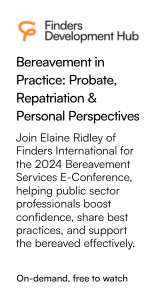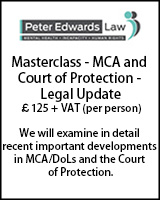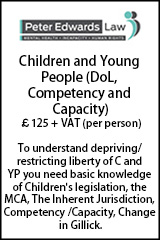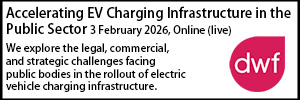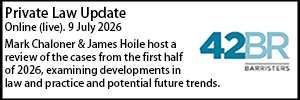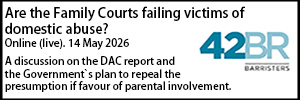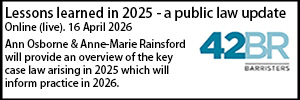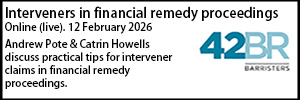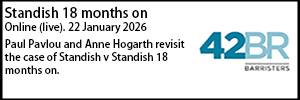Court of Appeal allows second local authority appeal over “island-hopping” judgment, criticises Family Court judge for Google search
- Details
The Court of Appeal has allowed a second appeal made by a local authority against a decision by a circuit judge to allow an appeal against findings made by a deputy district judge in care proceedings.
In T (Fact-Finding: Second Appeal) [2023] EWCA Civ 475, Lord Justice Baker said: “I conclude that Judge Greensmith was wrong to allow the appeal on the first three grounds advanced before him”. He restored the findings made by the Deputy District judge.
Outlining the background to the case, Lord Justice Baker said the care proceedings involved four children, T, U, V and W.
The family are originally from a country in Africa. T was born in that country in 2005 to the father and his then wife. In 2010, after their divorce, the father married his present wife, hereafter referred to as "the stepmother", and in 2013 she gave birth to their first child, U.
After arriving in the UK, the stepmother gave birth to two further children, V and W, in 2018 and 2020.
In December 2020, all members of the family were granted indefinite leave to remain in the UK.
On 6 May 2021, T, then aged 15, made allegations at school, at a meeting with her head of year and her father, that the stepmother had, over the course of around three years, been waking her up in the middle of the night and taking her to a car outside occupied by two male family friends, X and Y.
T alleged that “X would kiss her in the front of the car and that Y would have sexual intercourse with the stepmother in the back of the car”, said the Court of Appeal judge. She alleged that the men had “threatened her with violence if she said anything about it”.
A joint visit between the police and social services took place and the parents agreed to all the children being accommodated under s.20 of the Children Act 1989.
The local authority started care proceedings and all four children were made subject to interim care orders. On 15 May 2021, T was interviewed by the police under the Achieving Best Evidence ("ABE") procedure.
In March 2022, a fact-finding hearing started in front of Deputy District Judge Hornby, in which the local authority sought findings in line with T's allegations and, in addition, findings against the father and stepmother of “failure to protect T, physical and emotional harm of T, and a likelihood of significant harm to the younger children”.
The deputy district judge considered first T's credibility. He said: “I have to weigh in the balance when considering T's credibility the issue about her dishonesty raised by the initial foster carer… She had indicated to the guardian that T had been dishonest on occasion.”
After considering the examples, he said: “Having taken the above into account I am satisfied that there is nothing that I have heard in the evidence during the course of this hearing nor that I have read in the extensive papers within the bundle, which paints a picture of T other than as a bright, intelligent, sensible and truthful person."
Deputy District Judge Hornby referred to examples of inconsistencies and lies in the statements and evidence of the father and stepmother.
Lord Justice Baker said one such example was as to when they had first heard about the allegations. “In her interview, T had said that she had told the father two or two and a half years before the meeting at the school. The father had denied this, but this was contradicted by what he was recorded as saying on a police bodycam on an occasion when they visited the family home after T's initial allegation. The stepmother had been present and had not challenged what the father said. Another example was the inconsistency in the stepmother's accounts about how often she had seen the two men.”
The deputy district judge made the following conclusion on care proceedings: “Having considered all of the evidence before me, written and oral, my conclusion is that the local authority has been able to prove its case against both stepmother and the father.”
He also concluded that as a result of the parents’ abuse of T, the younger children were at risk of “significant emotional and physical harm”.
In the first appeal, the stepmother put forward four grounds of appeal against the deputy district judge's findings:
- his analysis of T as a reliable and credible witness was flawed;
- he omitted evidence that undermined the reliability and credibility of the allegations;
- he failed to apply the Lucas direction properly and wrongly placed disproportionately significant weight on the stepmother's inconsistency;
- he gave inadequate reasons as to why the findings were made.
The first appeal was heard by circuit judge, HH Judge Greensmith.
Lord Justice Baker said: “We were told that, at the start of the hearing of the first appeal, HH Judge Greensmith made observations about the improbability that a child could be taken to a car parked in the street where sexual activity involving three adults took place on many nights over a three-year period without any reports from neighbours.
“He told counsel that he had conducted a Google search and looked at the property and that the description of the street in the deputy district judge's judgment as ‘narrow’ was correct. In response, counsel for the local authority said that the police had conducted only limited house-to-house inquiries, to which the judge replied that he did not think it would require any such inquiries for the activity complained of to be reported to the police.”
During the hearing, Judge Greensmith also referred to an “apparent inconsistency in T's accounts on which the stepmother and father relied”. The records of a strategy meeting and the initial statement filed by the social worker in the proceedings had stated that in her initial conversation with the social worker and police office, T had alleged that she had been taken to a park to be abused by two men, whereas in her ABE interview T had denied that this had happened.
Judge Greensmith allowed the appeal on all four grounds. He concluded: “I am setting aside the findings made by the deputy judge as I am satisfied that on the evidence as presented no court could properly make any of the findings made by the deputy judge.”
The second appeal was brought by the local authority. The local authority's grounds submitted to the Court of Appeal, as outlined by Lord Justice Baker, were:
(1) The judge was wrong in law to allow the appeal:
(a) he failed properly to direct himself as to the role of an appellate tribunal in an appeal against findings of fact, or to apply such directions as he gave himself;
(b) he was wrong in his approach to the lower court's assessment of the ABE evidence;
(c) he was wrong in concluding that DDJ Hornby had failed to be clear as to how he applied his Lucas self-direction and thereby gave the impression of reversing the burden of proof;
(d) he was wrong to conclude that DDJ Hornby's reasons were 'misguided and significantly failed to accord with the evidence'.
(2) In the alternative, he was wrong not to remit the matter for rehearing.
(3) He misapprehended the consequences of his decision.
Under ground 1(a), it was submitted on behalf of the local authority that Judge Greensmith had adopted the wrong approach to the hearing of an appeal against findings of fact. “The deputy district judge had delivered a granular judgment in which he conducted a detailed analysis of the evidence from across the wide canvas, looked at it critically, engaged with the contrary arguments, identified and applied the correct legal principles, and carried out a properly balanced evaluative exercise. It is an established principle that an appellate court must not interfere with findings of fact by trial judges, unless compelled to do so. Yet in this case the circuit judge on the first appeal had adopted the role of the primary assessor of facts, going so far as to undertake his own research on Google and thereby crossing the line between a mere review and a de novo assessment.”
On behalf of the respondent stepmother, it was accepted that the first appeal judgment was brief but it was described as “focused and very strongly engaged with the procedural and substantive deficiencies of the investigation and the trial judgment, in particular (1) the trial judge's failure to give any or any sufficient consideration to the improbability of the allegation, (2) the way the ABE interview had been conducted and the trial judge's reliance on it, and (3) his analysis of the credibility of, respectively, T and the parents”.
Discussing the grounds under appeal, Lord Justice Baker said: “Whilst Judge Greensmith correctly identified the proper approach of an appellate court to findings of fact by a court of first instance, he regrettably failed to follow it.”
The Court of Appeal judge continued: “The deputy district judge's judgment contained a comprehensive analysis of the evidence and a detailed explanation of his reasoning. Of course he did not refer to every part of the evidence nor every point made in submissions. But he dealt with both the evidence and the arguments in a way which leaves no room for doubt that he took everything of relevance into account.
“In contrast, Judge Greensmith alighted on only a few aspects of the evidence in a way that could not unfairly be described as ‘island-hopping’.
“This is illustrated by a comparison of their respective treatments of three aspects of the case – the ABE interview, the approach to credibility, and proportionality – which formed respectively grounds 1, 3 and 2 of the appeal against the deputy district judge's findings.”
The Court of Appeal judge noted that the deputy district judge had watched the video recording of T’s ABE interview which he subjected to a “detailed analysis”.
“In contrast, Judge Greensmith, who had not seen the recording, dismissed the interview and the deputy district judge's treatment of it in just four sentences”, he added.
Discussing the ABE interview, Lord Justice Baker said: “I respectfully disagree with Judge Greensmith's view that the deputy district judge failed to have regard to the requirement for the ABE guidelines to be followed. On the contrary, it is to my mind plain from the deputy district judge's judgment that he was aware that the guidelines should be followed and understood the consequences if they were not. In the circumstances, it was to my mind wrong for the appeal judge to conclude that no weight should have been attached to the ABE evidence.”
Referring to the issue of the weight given to the “probability or improbability of sexual activity taking place in a car parked outside the house on a regular basis over three years”, Lord Justice Baker said:
“On appeal, Judge Greensmith accepted that the judge had taken the implausibility of what was alleged into account, but added that ‘the manner in which he did so is not clear’ and concluded that he ‘failed to have sufficient weight’ to the fact that it was ‘highly improbable’.
“Judge Greensmith's assessment was, however, based in part on information that was not before the judge at first instance and not evidence that any party had asked to be admitted on the appeal, but rather the results of his own investigation on Google. It is wrong for any judge to carry out his own investigations and doubly wrong for a judge to do so on appeal when the issue is whether the judge at first instance was wrong to make the findings on the evidence before him. Putting aside the Google search, however, it is clear that the probability or improbability of what was being alleged was in the deputy district judge's mind when he carried out his comprehensive and careful analysis of the totality of the evidence. The weight to be attached to it was a matter for him.”
Concluding the judgment, Lord Justice Baker said: “For these reasons, I conclude that Judge Greensmith was wrong to allow the appeal on the first three grounds advanced before him. As to the fourth ground, contrary to the judgment on appeal, the deputy district judge's reasons were neither inadequate nor misguided. They accorded with his assessment of the evidence. Accordingly, I find that it was not open to the judge on appeal to set aside the findings.”
He allowed the local authority’s appeal and restored the findings made by the deputy district judge.
Lady Justice Falk and Lord Justice Singh agreed.
Lottie Winson

























